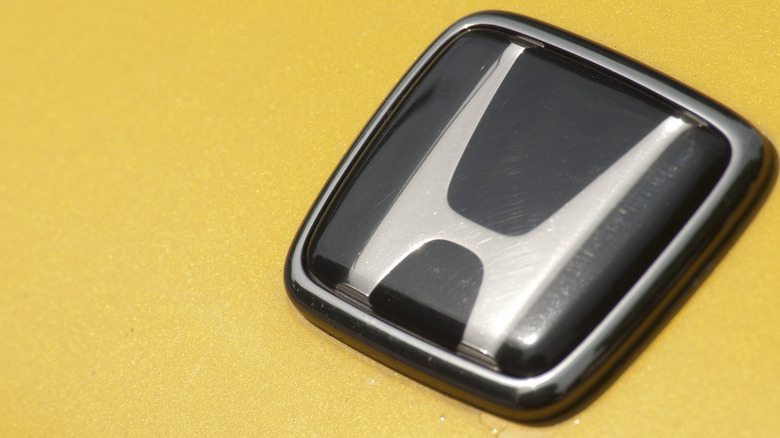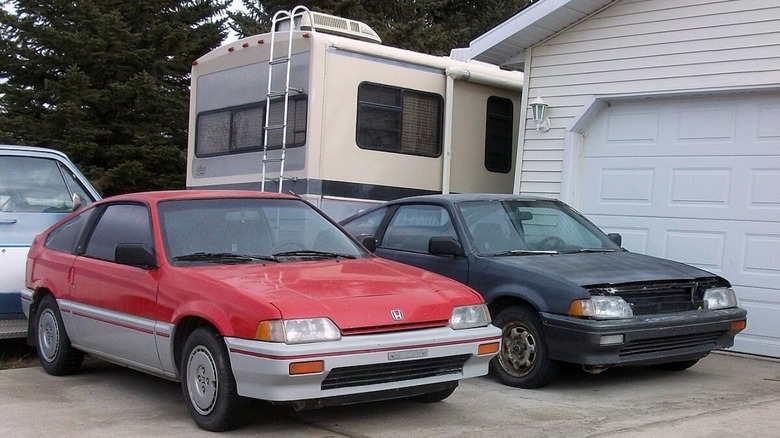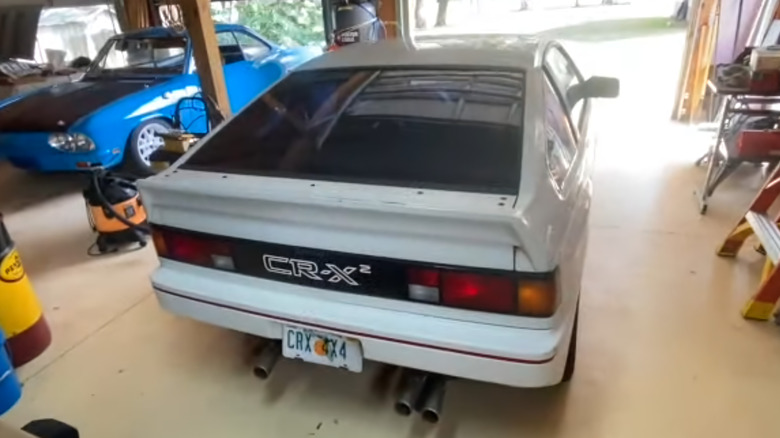The Honda CR-X Squared: The Twin-Engine Oddity That Somehow Worked
Two heads are better than one, they say, and we've probably all experienced the relief of finding a problem rather easier to tackle with another's understanding and support. Two engines, meanwhile, aren't necessarily better than one. A dual-engine setup might boast more combined power, but it can also result in a model that's much more mechanically complex and impractical.
Cars with two engines under the hood have been created by the biggest automakers, such as Citroën's 2CV Sahara AZ 4x4, and by veteran car modifiers and customizers, such as the hot rod Mysterion dreamed up by the legendary Ed Roth. Honda is another popular brand that has ventured into this fascinating experimental territory, with the CR-X Squared.
The Japanese giant has enjoyed considerable success with the rather cool CR-X, a sporty compact introduced in 1983. Owners and enthusiasts have also boldly experimented with the model at times, and in doing so, something truly unique and wonderfully ridiculous was created: the CR-X Squared. Though the CR-X received neat variants like the Honda CR-X SiR, this model is something else entirely. Let's see when and why this unique CR-X was created, what the second engine offered it, and where it is today.
How the Honda CR-X became the CR-X Squared
The '84 CR-X was the first model available (two original-generation models are pictured here). The name, according to Japanese auto publication Car Styling at the time (via Hagerty), meant "Civic Renaissance," an indication that the CR-X was intended to take the familiar Honda Civic drivetrain in a new direction. The model packed sufficient if distinctly unspectacular power in its small body: Modest debut trim options included a 1.3- or 1.5-liter engine, affording the CR-X a maximum of 84 pound-feet of torque and 76 horsepower, with a top speed of 111 mph. That's nothing to sneeze at for a model that was 63.9 inches wide, 144.6 inches long and weighed just 1,713 pounds.
By May 1985, one plucky band of creatives had decided that the CR-X's specs needed a helping hand. That month, the experienced car-tinkerers at Car and Driver magazine reported that they had considered a number of ways to juice up the car's horsepower, including a bigger Honda engine in front coupled with a smaller one from Chevrolet in the rear. The option they settled on, however, was perhaps the most incredible of all.
The "Hubba Hubba Honda Honda" the front page of the magazine spoke of was the CR-X Squared, a creation that brilliantly utilized the storage space the base model offered to incorporate twin engines. It was actually functional.
[Image by dave_7 via Wikimedia Commons | Resized and cropped| CC BY 2.0]
The system that powers the Honda CR-X Squared
Of course, this was not a production model but a one-of-a-kind passion project, and so the finer details of its creation could have been lost to time. They could have, had it not been for the fact that one of the creators wrote at length about it years later. In July 2020, Don Sherman, formerly of Car and Driver, reminisced about the machine for Hagerty.
The CR-X Squared, or Project Synchronicity CR-X2 as Sherman referred to it, began by doubling up on the engines already built into the '84 CR-X: the 1,488-cubic-centimeter model discussed previously. This was upgraded to something a bit more potent later in the experimental process: two power trains from a Honda Civic. At the time, this model sported single-overhead-camshaft 1.8-liter engines, with 86 hp and 93 lb-ft of torque. Coupled with extra elements like bucket seats and machined-sidewall wheels, the car took a further step from the '84 CR-X it had once been and another toward Sherman's "Super Synchronicity."
In this guise, the twin-engined vehicle boasted 202 hp and reached up to 147 mph. The crucial thing was for it to perform practically and safely, and to actually be able to function in a semi-standard fashion. This it did, Sherman stated, offering the driver the opportunity to switch between driving with both engines enabled or choosing one of them. But the team had to sell the extraordinary machine to cover costs, and it went on to serve multiple drivers.
How the CR-X Squared was used
Sometimes, experimental models like this are created just for the sake of it. As we've seen, though, the CR-X Squared wasn't only functional, it produced some solid power and was a practical ride. Being such an unusual concept, it also attracted considerable attention from potential buyers.
Sherman did not state who originally purchased the model when the time came to sell it, but did tell Hagerty that the new owner had it for multiple years and many miles before it moved on again. In 1996, after a number of other owners and long drives, Joe Dunlap of Hagerty bought it. Dunlap, a car enthusiast and experienced tinkerer, didn't consign the CR-X Squared to a dust-gathering display role; he drove more than 50,000 miles in it.
The model is now in the similarly experienced and safe hands of Randy Carlson, founder of Carchaeology, which tasks itself with researching, appraising and marketing a huge range of autos. In October 2023, Carlson took to Instagram to share an image of the CR-X Squared at the Japanese Classic Car Show at California's Long Beach. An eager commenter asked if a lot of showgoers paused to gawk at the second engine, and Carlson responded, "I'd say most folks just walked by the front and never looked in the back!"


